Moc hezký 
Croatia 2024 with metal detector Minelab Manticore
Categories: Nálezy nejenom s detektorem kovů v mořích a oceanech
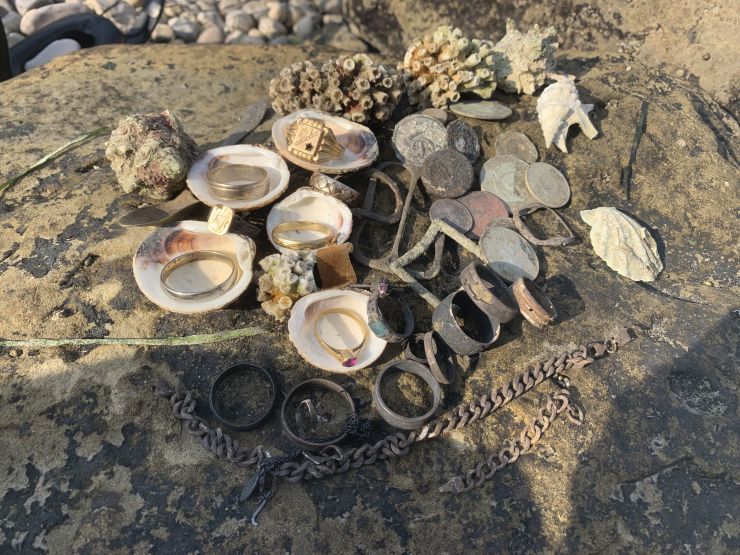
The last week of August I finally managed to get away from work and go somewhere. Weighed down by my wife and two kids, I went to my favourite Croatia. It was clear from the beginning that due to the presence of my wife and kids I would have to be pretty tame, so the only chance was to get up very early and if possible come back for breakfast 😀 .
This turned out to be an excellent tactic as I was alone on the beach and managed to catch a pretty decent tide many times, which makes the search much easier.
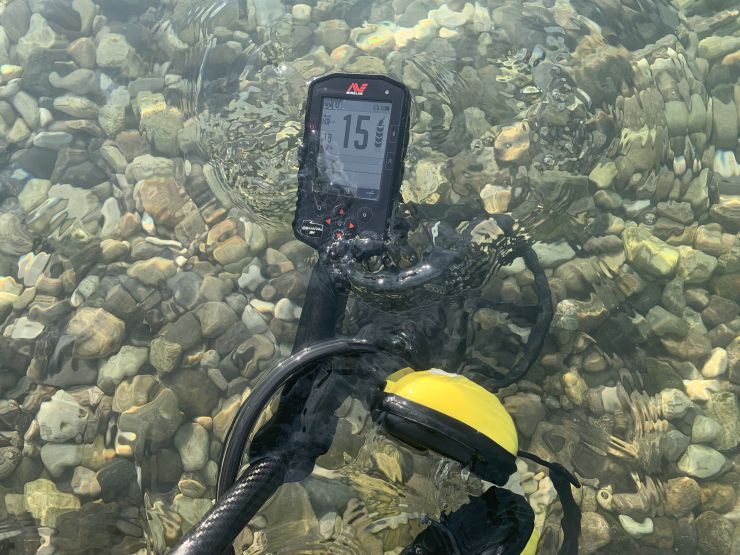
Metal detector setup Minelab Manticore
However, on my very first search I noticed that the sea here was noticeably saltier than what I remembered from France last year. So a slight reduction in sensitivity was necessary, and more importantly, switching the detector to beach mode in the first place.
Note: In France/Italy it was possible to search at a sensitivity of about 18/17, here I reduced to 17/16 according to the coil to make the detector 100% stable.
Furthermore, when searching in the sea, you must try to keep the coil distance from the ground as stable as possible and not pump the coil against the ground underwater. In this case I recommend to leave the ground tuning on AUTO
If you are going to move the coil under sea water so that the detector works reliably, it is not possible to select any other mode than Beach: salt water. This mode has the strongest conductive seawater filter, so it is used when the probe is completely submerged and surrounded by conductive salt water.
However, Manticore's other beach modes are designed for locations where the influence of salt water is not as extreme, so for example, the beach mode is not as extreme. In this case, the salt water is not as important for the detector as it is for the tidal zone where the sand is saturated with salt water, but the salt water is noticeably less important for the detector.In this case, the water does not flow everywhere in the immediate vicinity of the coil winding and the mass of salt water is not even above the coil, where the coil is also sensitive.
It was easy to search after low tide in the other beach modes as well, only it was necessary to play slightly with each modet with the sensitivity - but it all always depends on the current conditions, the salinity of the water and the place where you are.
The rest of the settings such as audio you can more or less go by personal preference, just in case you'll be searching underwater I recommend to pull down the recovery speed to 4, because against the resistance of the water you can't realistically move the coil any faster anyway.
The universal Iron Limit setting in this case for beach searches is 8/3 (top/bottom) - from the preset limits. This setting is just universal enough to filter out the iron beer caps and minimally interfere with other desired targets. More advanced searchers, however, can certainly set the limits manually depending on the situation and the amount of trash.
Anyway, despite the saltwater effect, I can confirm Minelab 's algorithms can obviously handle it well and the graphical evaluation of targets in saltwater will not change at all compared to what you are used to on land.
The vast majority of good targets went beautifully on the line, only the smaller and deeper targets tended to drop down a bit, as is normal- however the ID range still matched.
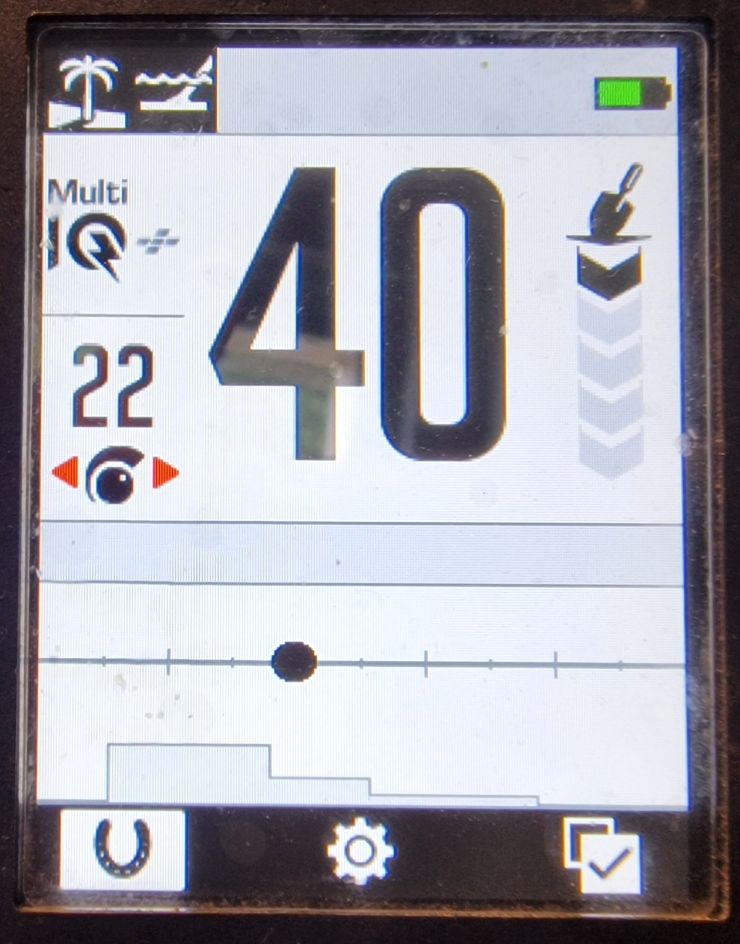
After the initial setup and a bit of testing, I went on the searchlight on day 2 after arrival and immediately got lucky. The stainless steel ring was the first to fall, but about an hour after that I was holding this year's first wedding band from the sea, however right after finding it I didn't really want to believe it as the ring was quite oily for gold and the date inside said it hadn't been there for any extremely long time again.
After a bit of research I was reassured by the 585 mark and the fact that the crust could be removed from the ring with just a fingernail. I had it tested when I got home and it held up normally on 14kt acid, whether it was near the iron , or where the crust came from I don't know, either way it was good 😄.
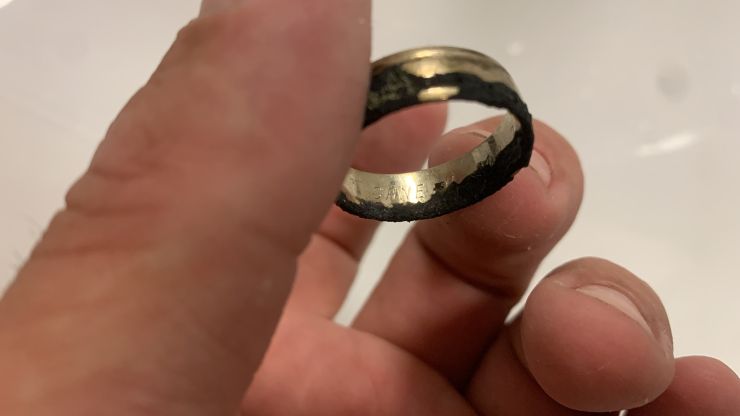
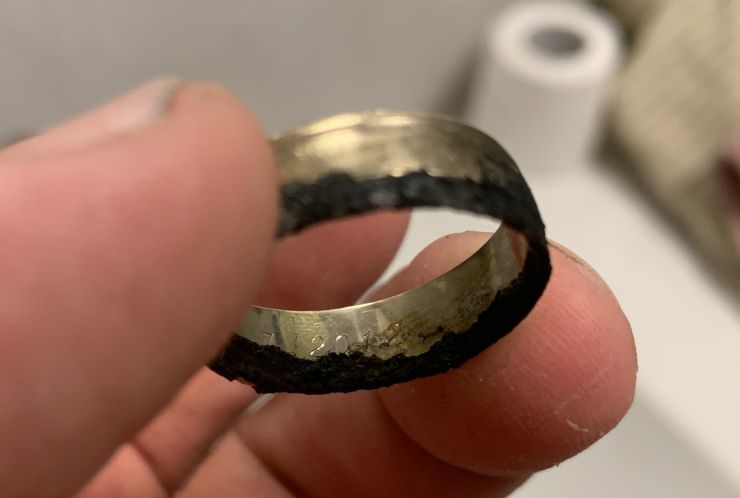
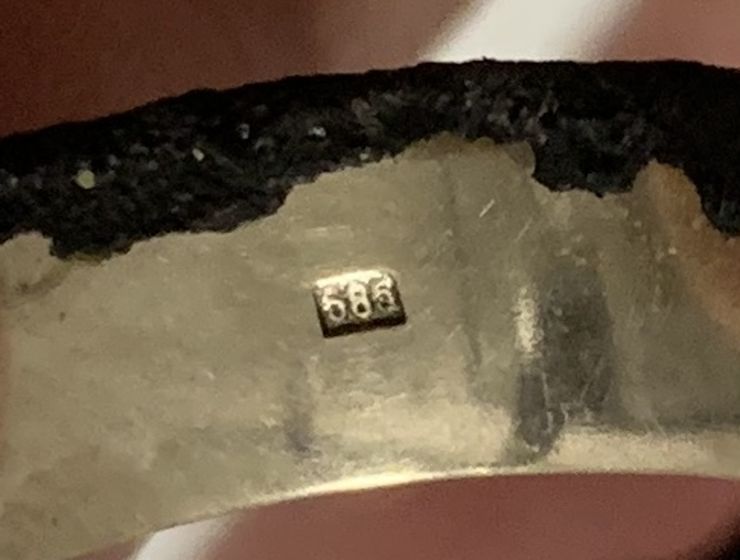
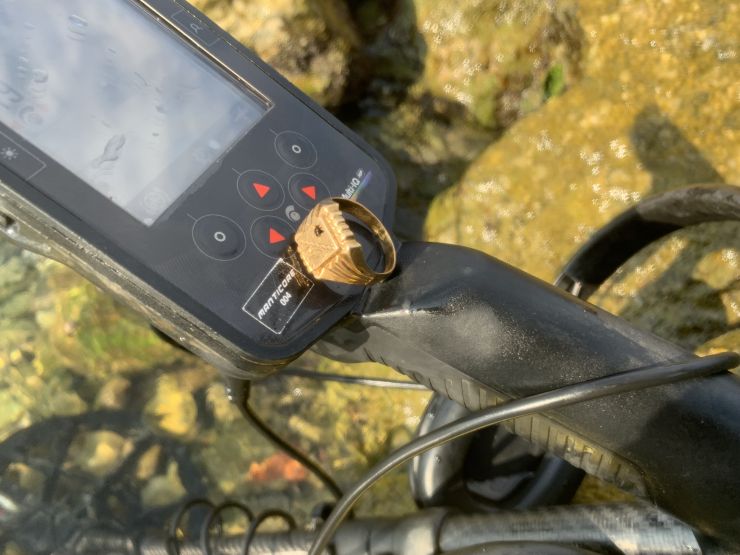 If you look closely you will see that the Manticore used is number 4. Peter is still using our test one that we got about a year before launch. You can see all the Manticore tests here: Manticore metal detector tests (editor's note)
If you look closely you will see that the Manticore used is number 4. Peter is still using our test one that we got about a year before launch. You can see all the Manticore tests here: Manticore metal detector tests (editor's note)
Furthermore, I was surprised how the Euro has become domesticated in Croatia and the beaches have already managed to fill up with the new currency, which was nice considering that the vast majority of Euro coins there were max. 2 years so the coins looked pretty much useless, and the hotter ones could be exchanged by the old familiar method of washing dirty money in a coffee machine 😄. The better ones the kids exchanged immediately for ice cream right on the beach 😄.
The very next day the best find from this holiday arrived and it was a massive men's monogrammed ring and still in 18kt gold - well that's beautiful. The only blemish on the beauty is the missing stone, but I've somehow come to terms with that 😃.
The rest of the days continued in a similar sort of way with alternating coins falling , occasionally some older finds like various shoe and belt buckles, old buttons, Yugoslavian and sometimes older coins and martens. In between, of course, some gold in the form of other rings, interestingly another ring with the HJ monogram which had obviously been that way for a long time and one pendant with the sign of the ram.
All in all, the tactic of going early in the morning worked well, on the one hand it was possible to catch a nice outflow and last but not least, my wife and children were happy that I could spend time with them, only in the evening I passed out quite early after a hard day 😃.
However, for the fact that I was only there for a week I would say that the result is more than decent 😀.
So again next year.
Jaccob
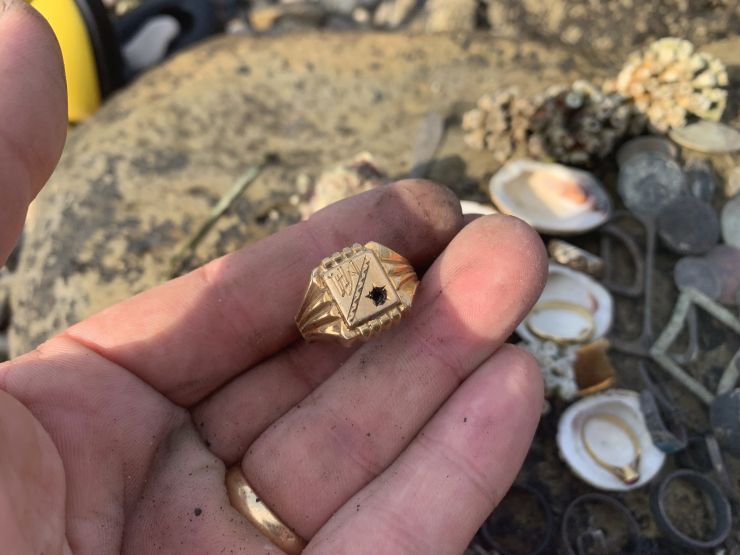
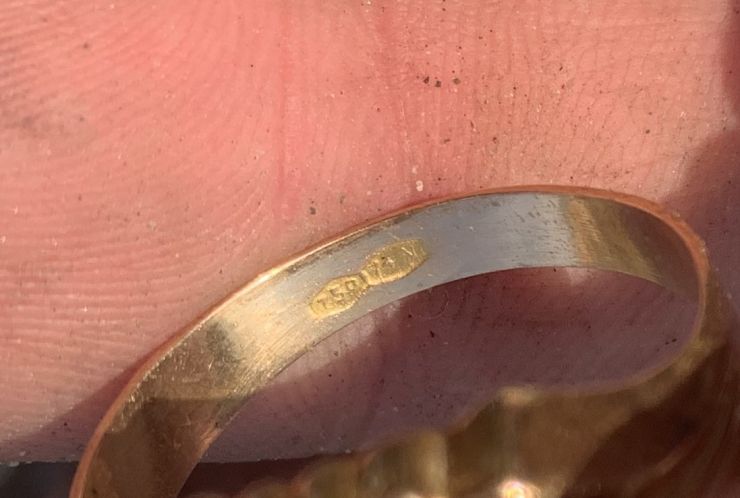
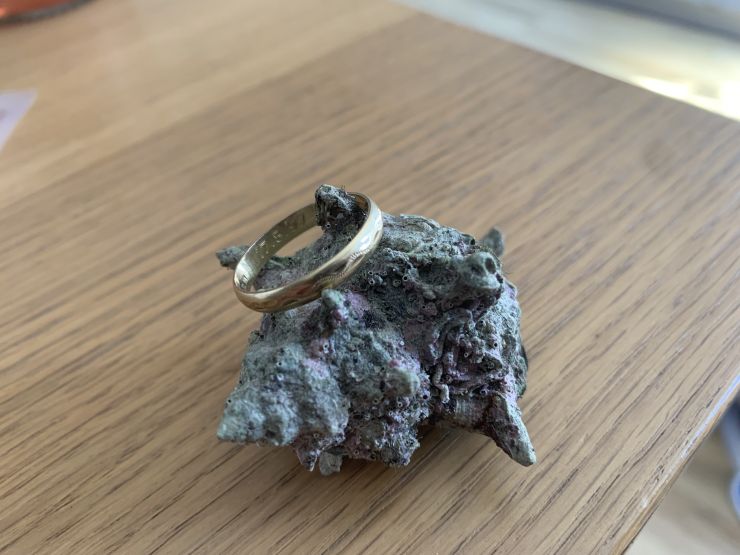
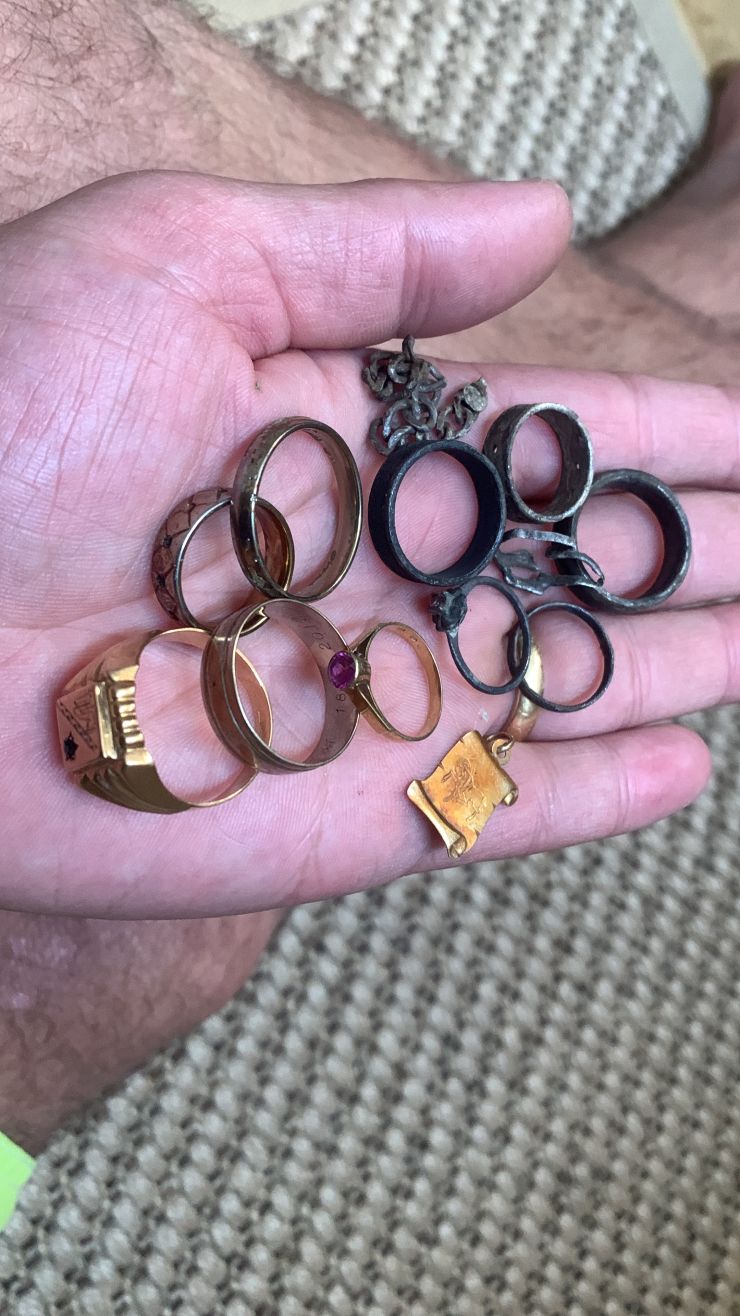
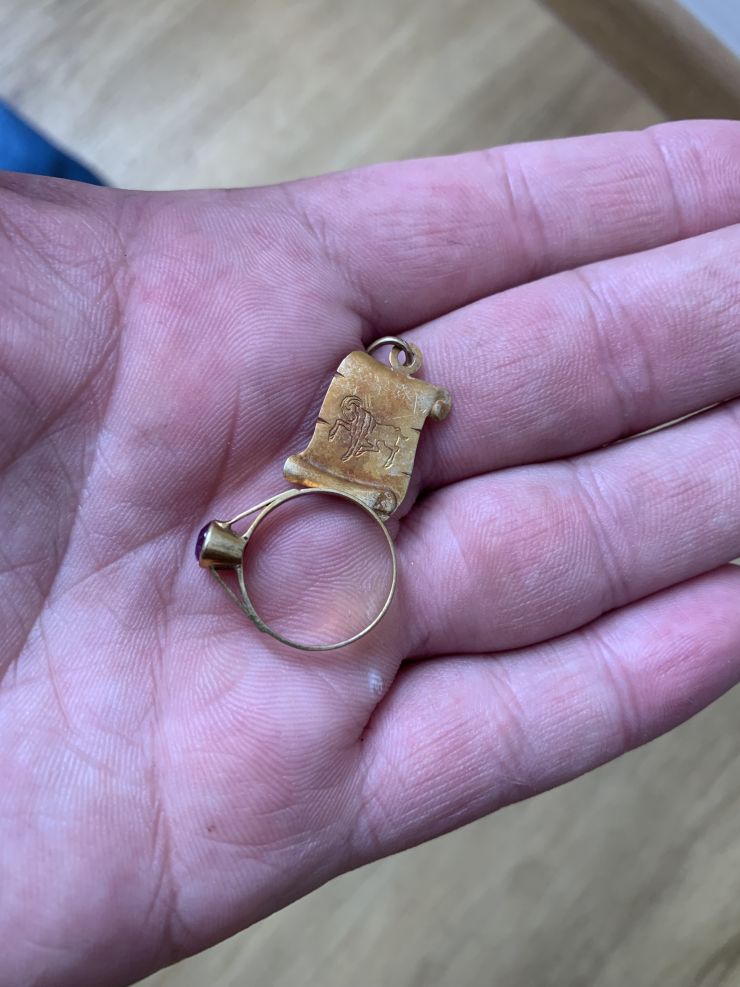
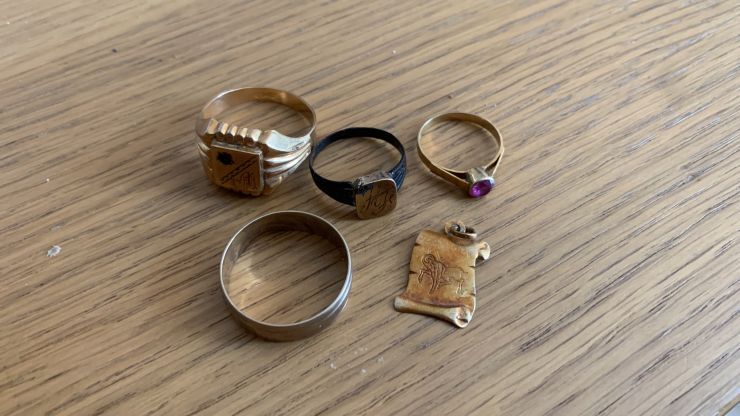


The article is included in categories:
- Archive of articles > Archaeology > Finds and rescue research abroad > Nálezy nejenom s detektorem kovů v mořích a oceanech
Post
pěkné to máš 

Paráda gratuluji moc
Slušná jízda!👍 Taktiku brzkého vstávání doma taky uplatňuju. Je to snad jediná šance jak si plnohodnotně zahledat a doma nemít kyselo.🤣
Argill- akorát potom večer jsem si dal dvě piva, odpadnul v 9 a nebylo semnou nic.. 


Kdyby to trvalo ještě chvály měl bych doma taky kyselo akorát z jiného důvodu :D
Dvojnásobnej pantáta, co by s tebou mělo jako bejt?😂 Potřebuješ odpočívat... a hodně!☝️😀 Mám to v bleděmodrým stejně. 2 roky zpátky bylo nemožný jít spát před 1 hodinou v noci, dneska jsem rád když to doklepu do 23h. A to mám jenom jedno škvrně, takže... Chápu.😉
A Petře, kolik času hledání bylo před tou snídaní? A už jsi to zvážil, kolik toho zlata je celkem? Vidím tam 6 kousků zlata? Jestli teda dobře vidím 
A jestli to je 14-ti karátové zlato, že chytlo jakby tu rez, tak přece je tam 10 karátů jiného kovu a ten tohle způsobil, ryzí by bylo čisté, ale to asi víš.
Vendelin-ta krusta vubec do toho materialu nezasahla….myslim ze to bylo puvodne nekde prilepene u zeleza a z toho se na to nabalila ta rez…(podobne veci jsou videt i u sudetaku),jak vidis tak ta rez byla jen z jedne strany .
Slo to z toho dostat jen nehtem a material pod tim (zlato)zustal absolutne nedotcenej …
Na spolecne fotce je to videt- tam uz je ocistenej
Jinak i ten cernej prsten s tim monogramem HJ je zlato…obroucna normalne puncovana 333(9ct) ale ta vrchni ploska byla evidentne dodelavana a ta byla z klasicke 14ctky
Zdravím, nechystá se někdo z místních hledačů v dohledné době na sever Chorvatska, případně nezná tam nějaké místní lovce? 












